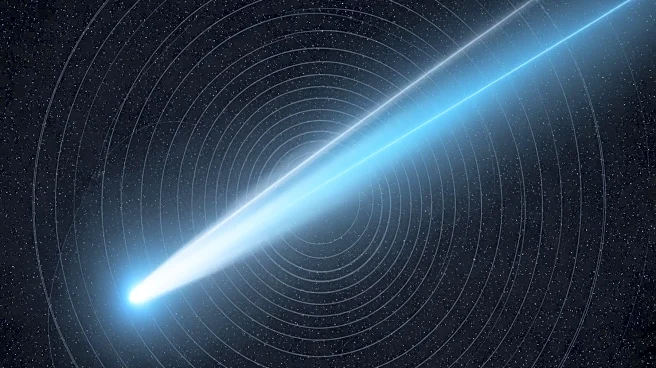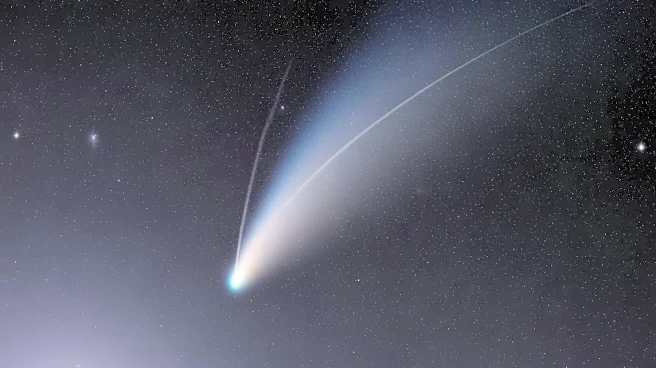What's Happening?
Comet 3I/ATLAS is making its appearance in the pre-dawn sky, emerging from behind the Sun's glare. Observers with telescopes capable of detecting faint objects can view the comet low in the east-southeast
before dawn. The comet's visibility is improving for mid-northern observers, with the Moon's waning phase reducing interference. By November 16, the comet will be positioned 20 degrees above the horizon, offering a better viewing opportunity. The comet's path will take it past Gamma Virginis, providing a reference point for skywatchers.
Why It's Important?
The appearance of Comet 3I/ATLAS offers a unique opportunity for astronomers and enthusiasts to observe an interstellar object. Such events are rare and provide valuable data on the composition and behavior of comets originating from outside our solar system. Observing the comet can enhance understanding of interstellar phenomena and contribute to ongoing research in astronomy. Additionally, the event may inspire public interest in astronomy, encouraging educational activities and community engagement.
What's Next?
As Comet 3I/ATLAS continues its journey, astronomers will monitor its trajectory and brightness, potentially leading to new discoveries about its composition and origin. Observatories and amateur astronomers may collaborate to capture images and data, contributing to scientific research. The comet's visibility will improve as it moves away from the Sun, offering more opportunities for observation and study.
Beyond the Headlines
The observation of Comet 3I/ATLAS highlights the importance of international collaboration in astronomy, as researchers worldwide contribute to understanding interstellar objects. The event underscores the need for advanced telescopic technology and data-sharing platforms to maximize scientific insights. Additionally, the comet's appearance may prompt discussions on the potential for future interstellar exploration and the search for extraterrestrial life.











